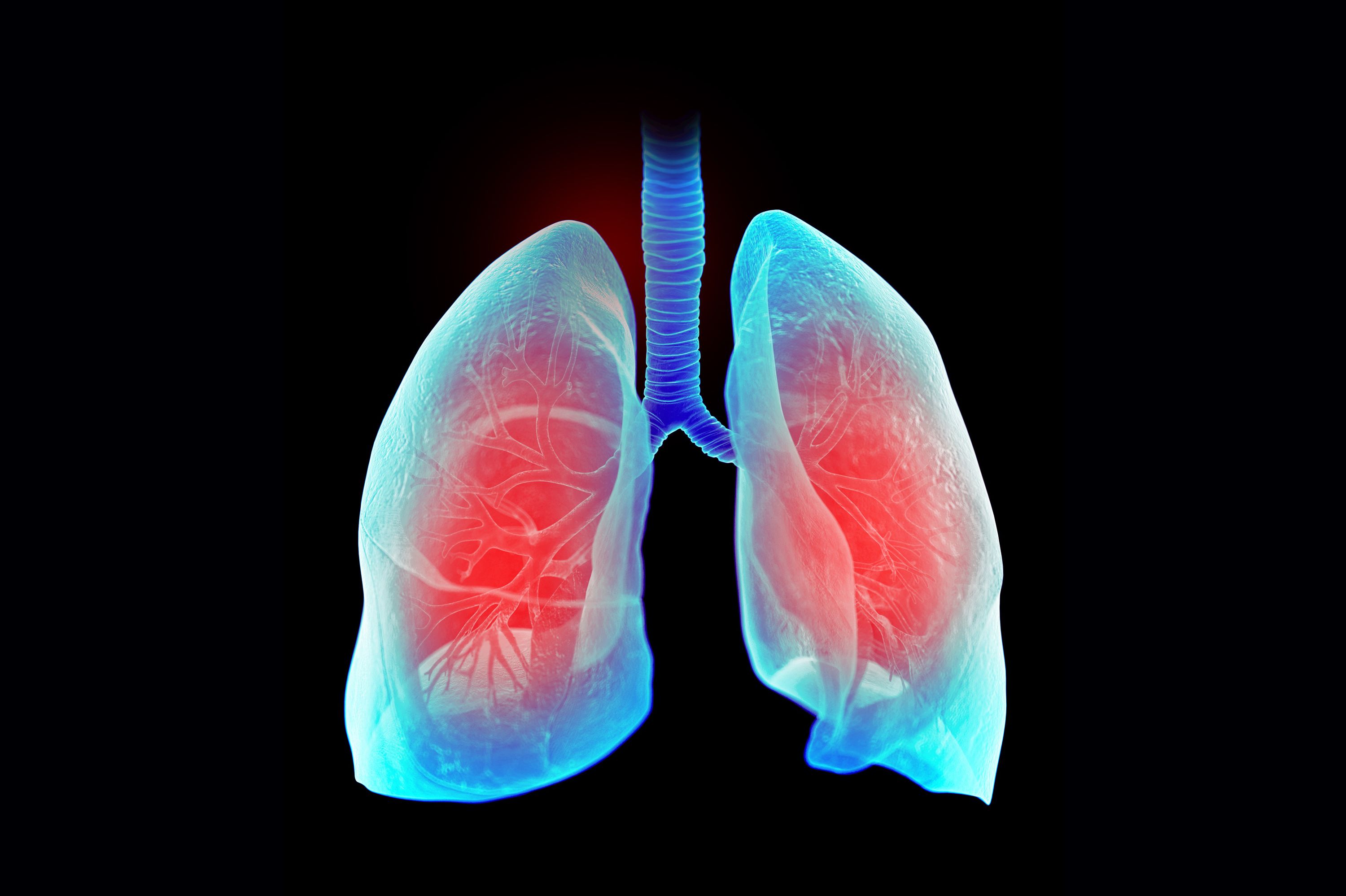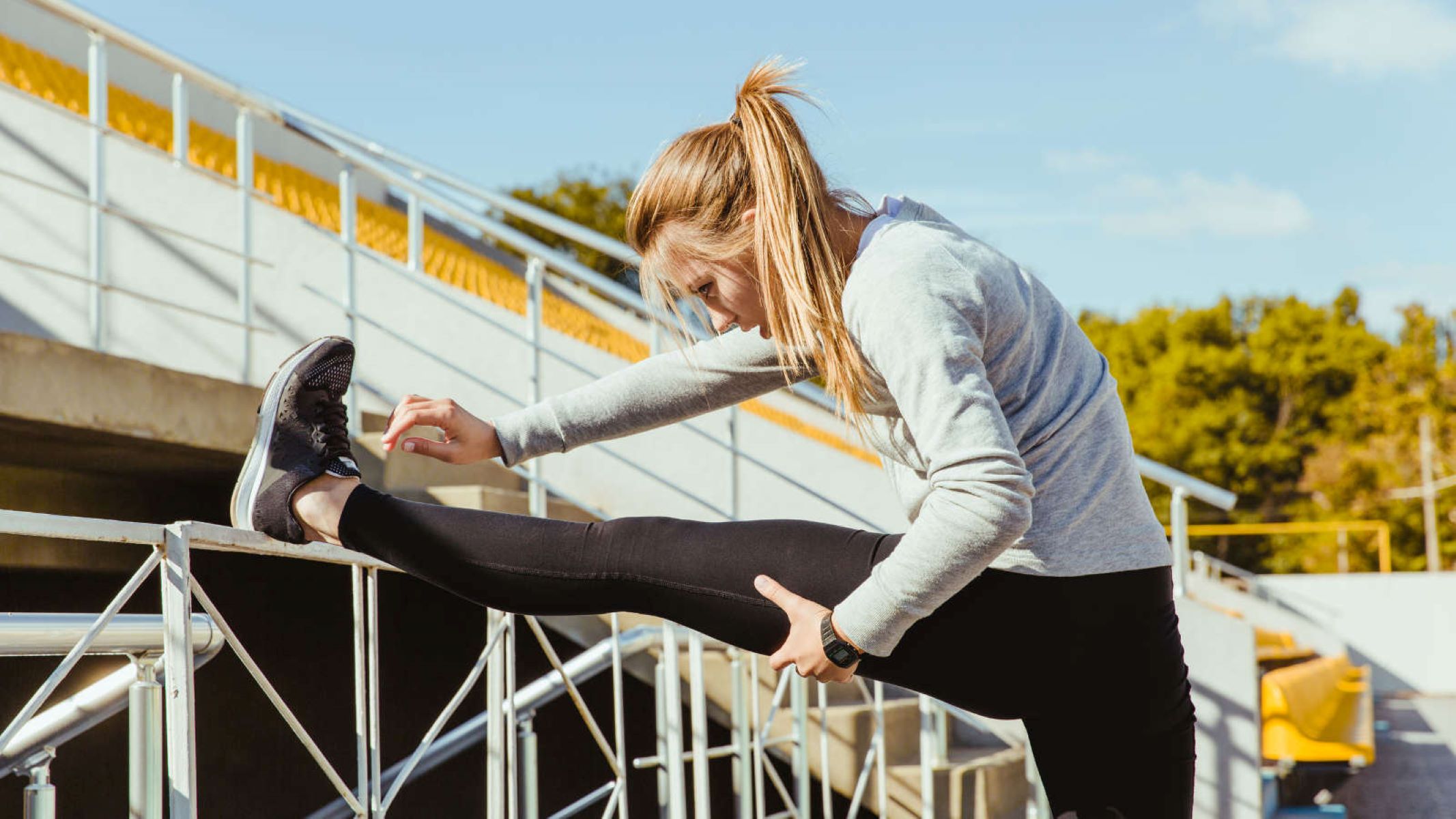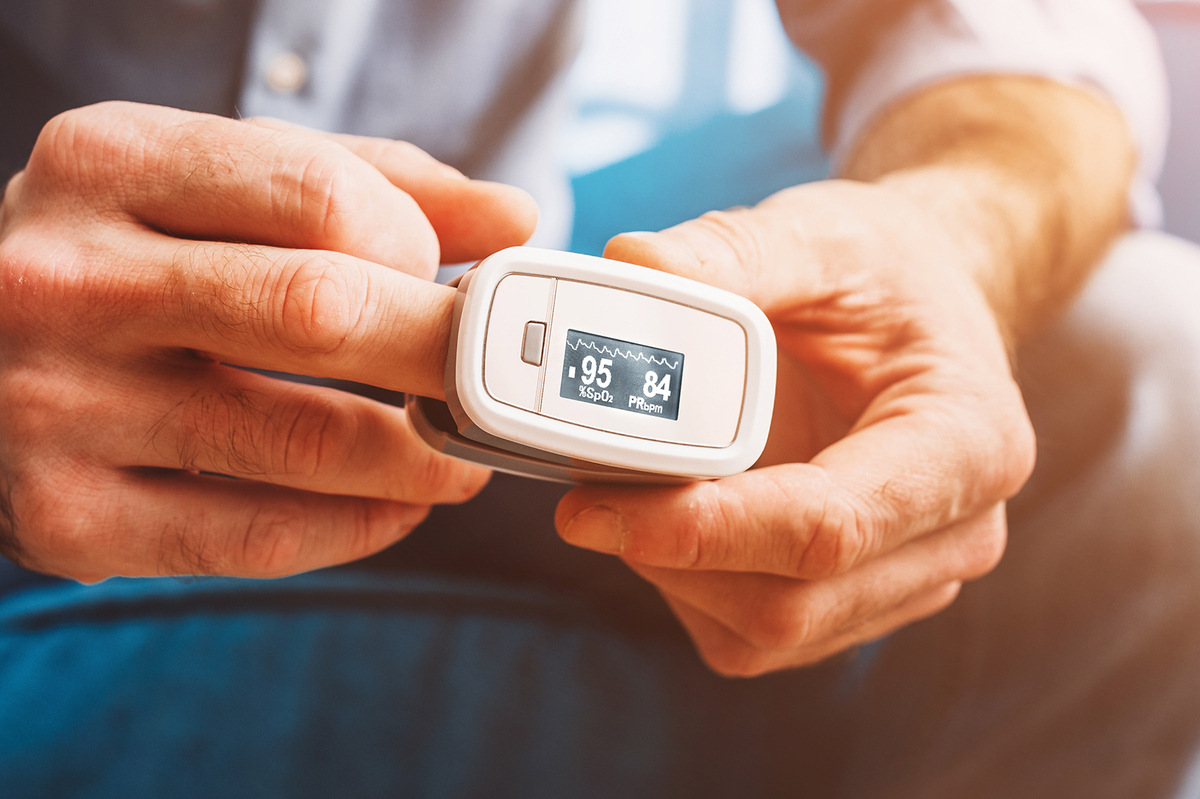Home>Misc>Featured>Why Is More Oxygen Better For Athletic Performance


Featured
Why Is More Oxygen Better For Athletic Performance
Published: October 11, 2023
Discover why more oxygen is crucial for optimal athletic performance and how it can be achieved with our featured products. Enhance your endurance and maximize your results with increased oxygen levels.
Introduction
Athletic performance is a constant pursuit of improvement, with athletes striving to push their limits and achieve new heights. From professional runners breaking world records to weightlifters competing for gold medals, athletes consistently look for ways to optimize their performance. One crucial factor in maximizing athletic potential is the level of oxygen in the body.
Oxygen plays a vital role in our bodies, acting as a fuel source and a key component in energy production. During physical exertion, our muscles require oxygen to generate energy and sustain performance. As such, the more oxygen that is available to the muscles, the more efficiently they can function, leading to improved athletic performance.
The relationship between oxygen and athletic performance extends beyond energy production. Adequate levels of oxygen in the body also contribute to optimal muscle function, endurance, and recovery. Athletes who understand the importance of maximizing their oxygen intake can develop strategies to enhance their performance and gain a competitive edge.
In this article, we will explore in depth the role of oxygen in athletic performance, including its impact on energy production, muscle function, endurance, and recovery. We will also delve into various techniques and strategies that athletes can employ to increase their oxygen intake and ultimately improve their performance.
By understanding the vital role that oxygen plays in athletic performance, athletes can make informed choices and implement effective strategies to maximize their performance potential. So, let us dive into the world of oxygen and discover why more of it is better for enhanced athletic performance.
The Role of Oxygen in Athletic Performance
Oxygen is a critical element that fuels our bodies and plays a fundamental role in athletic performance. When we engage in physical activity, our muscles require energy to perform. This energy is primarily generated through a process called aerobic respiration, which heavily relies on the presence of oxygen. Understanding the role that oxygen plays in athletic performance can provide valuable insights into how athletes can optimize their training and achieve peak results.
One of the key functions of oxygen in athletic performance is its role in energy production. During aerobic respiration, the body breaks down carbohydrates and fats to produce adenosine triphosphate (ATP), the chemical energy currency that fuels muscle contractions. Oxygen is essential in this process, as it facilitates the breakdown of these energy sources, allowing ATP to be efficiently synthesized.
In addition to energy production, oxygen also influences muscle function. As muscles contract and relax during physical activity, they require an adequate oxygen supply to sustain their performance. Oxygen is necessary for the muscles to function optimally, allowing them to contract efficiently and generate the required force.
Furthermore, oxygen plays a crucial role in endurance. As athletes engage in prolonged periods of physical activity, the muscles gradually deplete their energy stores. However, by maintaining a high level of oxygen supply, the body can continue to produce energy through aerobic respiration and delay the onset of fatigue. This is particularly important in endurance sports such as long-distance running or cycling, where athletes rely on a steady supply of oxygen to sustain their performance over extended periods of time.
Moreover, oxygen is essential for post-exercise recovery. Intense physical activity can lead to the accumulation of metabolic waste products, such as lactic acid, in the muscles. Oxygen plays a vital role in clearing out these waste products and facilitating the recovery process. By ensuring optimal oxygen intake post-workout, athletes can reduce muscle soreness, speed up recovery, and prepare their bodies for subsequent training sessions.
In summary, oxygen plays a multifaceted role in athletic performance. It is not only crucial for energy production but also influences muscle function, endurance, and post-exercise recovery. By understanding and harnessing the power of oxygen, athletes can optimize their training and ultimately improve their overall performance.
Oxygen and Energy Production
Oxygen plays a crucial role in energy production during physical activity. The process of aerobic respiration relies on the presence of oxygen to efficiently convert carbohydrates and fats into usable energy in the form of adenosine triphosphate (ATP).
When we engage in exercise, our muscles require energy to contract and perform work. This energy is derived from the breakdown of glucose and fatty acids through a series of chemical reactions. In the absence of oxygen, a process known as anaerobic respiration can occur, resulting in the production of ATP through inefficient means, which leads to the buildup of lactic acid and muscle fatigue.
On the other hand, when oxygen is available, the process of aerobic respiration takes place. During aerobic respiration, glucose and fatty acids are broken down in the presence of oxygen, allowing for the production of ATP in a more efficient and sustainable manner. This process yields a significantly higher amount of ATP compared to anaerobic respiration, providing the muscles with a longer-lasting and more reliable energy source.
By employing aerobic respiration, athletes can tap into their oxygen supply to generate sustained energy during endurance activities. This is especially advantageous for activities such as long-distance running or cycling, where athletes need a continuous and steady supply of energy to maintain their performance over extended periods of time.
Interestingly, the body has the ability to adapt and become more efficient in utilizing oxygen for energy production through regular aerobic training. With consistent training, the body can increase its oxygen-carrying capacity by developing a higher number of red blood cells and improving the efficiency of oxygen transport to the muscles. This adaptation allows athletes to utilize oxygen more effectively and enhances their overall endurance and performance.
In summary, oxygen is crucial for energy production during physical activity. Through aerobic respiration, it enables the efficient breakdown of glucose and fatty acids, leading to the production of ATP. This process provides athletes with sustained energy and enhances their endurance capabilities. By understanding the role of oxygen in energy production, athletes can optimize their training and maximize their performance potential.
Oxygen and Muscle Function
Optimal muscle function is essential for athletes to achieve their best performance. Oxygen plays a vital role in ensuring that muscles can contract efficiently, generate force, and maintain their function throughout physical activity.
When our muscles contract during exercise, they rely on a continuous supply of energy to perform work. This energy is generated through ATP, which is produced through the breakdown of glucose and fatty acids. Oxygen is essential for this process as it enables the efficient synthesis of ATP, ensuring a steady supply of energy to the muscles.
Furthermore, oxygen is necessary for the proper functioning of the mitochondria, which are the powerhouses of our cells. Mitochondria are responsible for producing ATP and utilizing oxygen to efficiently convert glucose and fatty acids into energy. Adequate oxygen supply allows the mitochondria to function optimally, ensuring that the muscles have the necessary energy to perform at their best.
Addtionaly, oxygen plays a crucial role in muscle recovery and preventing muscle fatigue. During intense physical activity, the muscles produce metabolic waste products, such as lactic acid, which can lead to muscle fatigue and discomfort. By providing a sufficient oxygen supply, these waste products are efficiently transported away from the muscles, allowing for faster recovery and reducing the likelihood of muscle fatigue.
Moreover, oxygen is crucial for maintaining the pH balance in our muscles. During exercise, our muscles produce hydrogen ions, which can lead to an acidic environment and impair muscle function. Oxygen helps to neutralize these hydrogen ions, ensuring that the muscle pH is maintained within an optimal range for optimal function.
Additionally, oxygen enables the proper functioning of the neuromuscular system. The neuromuscular system involves the interaction between nerves and muscles, allowing for coordinated movement and control. Oxygen ensures that the nerves can transmit signals effectively to the muscles, enabling precise and controlled movements during physical activity.
In summary, oxygen is a fundamental factor in muscle function during athletic performance. It enables efficient energy production, supports mitochondrial function, speeds up recovery, helps maintain pH balance, and ensures proper neuromuscular function. By understanding the importance of oxygen in muscle performance, athletes can maximize their training and optimize their overall performance.
Oxygen and Endurance
Endurance is a critical component of many sports and athletic activities. It refers to the ability to sustain prolonged physical effort and maintain performance over extended periods of time. Oxygen plays a crucial role in enhancing endurance by supporting energy production, delaying fatigue, and improving aerobic capacity.
During endurance activities such as long-distance running, swimming, or cycling, our muscles require a continuous supply of energy to sustain performance. Oxygen plays a key role in this process by facilitating the breakdown of carbohydrates and fats through aerobic respiration. This efficient energy production allows athletes to maintain a steady supply of ATP, the chemical energy currency of the muscles, throughout the duration of their activity.
Furthermore, oxygen helps to delay the onset of fatigue during endurance activities. When the body engages in intense physical exertion, it produces lactic acid, which can lead to muscle fatigue and a decline in performance. By ensuring a sufficient oxygen supply, the body can break down lactic acid and clear it out of the muscles more efficiently, allowing athletes to perform at a high level for a longer period of time.
Another important aspect of oxygen and endurance is the development of aerobic capacity. Regular aerobic exercise, which utilizes oxygen as the primary energy source, can lead to adaptations in the body that improve its ability to utilize oxygen. This includes an increase in the number of red blood cells, which carry oxygen to the muscles, and improvements in the cardiovascular system’s efficiency in delivering oxygen. These adaptations ultimately enhance an athlete’s endurance capabilities and allow them to perform at higher intensities for longer durations.
Moreover, oxygen plays a crucial role in regulating the body’s oxygen debt, which refers to the temporary oxygen shortage that occurs during intense exercise. After the exercise is complete, the body continues to breathe heavily and consume excess oxygen to replenish depleted energy stores, clear out metabolic waste products, and restore overall homeostasis. Adequate oxygen intake during the recovery period helps facilitate these processes and accelerates the removal of metabolic waste, reducing muscle soreness and speeding up recovery.
In summary, oxygen plays a vital role in enhancing endurance performance. It supports energy production, delays fatigue by clearing out lactic acid, improves aerobic capacity through physiological adaptations, and aids in post-exercise recovery. By optimizing oxygen intake and understanding its impact on endurance, athletes can improve their performance and achieve their full potential in endurance-related activities.
Oxygen and Recovery
Recovery is a critical phase for athletes as it allows the body to repair and rebuild after intense physical activity. Oxygen plays a vital role in the recovery process by facilitating the removal of metabolic waste products, reducing inflammation, and restoring energy reserves.
During exercise, our muscles produce metabolic waste products such as lactic acid. These waste products can lead to muscle soreness and discomfort if not effectively cleared from the muscles. Oxygen plays a crucial role in this process by facilitating the breakdown and removal of these waste products, allowing for faster recovery and reducing the likelihood of delayed onset muscle soreness (DOMS).
Additionally, oxygen aids in reducing inflammation in the muscles and tissues. Exercise-induced inflammation occurs as part of the body’s natural response to physical stress. By increasing oxygen supply, inflammation is reduced, allowing for faster recovery and minimizing discomfort. This is particularly important for athletes who engage in repetitive and high-intensity training, as it helps prevent overuse injuries and supports long-term performance.
Oxygen also plays a key role in replenishing energy reserves during the recovery process. Intense exercise can deplete glycogen stores in the muscles, which are a crucial source of energy. By ensuring adequate oxygen intake during the recovery phase, the body can restore glycogen levels more efficiently, allowing athletes to replenish their energy reserves and be fully prepared for subsequent training sessions or competitions.
Furthermore, oxygen helps to facilitate the repair and regeneration of damaged tissues. Intense physical activity can cause microtrauma to the muscles and connective tissues. Oxygen supports the healing process by providing the necessary resources and oxygenated blood to damaged tissues, allowing them to repair and rebuild more effectively.
Moreover, oxygen plays an important role in supporting the immune system during the recovery process. Intense exercise can temporarily suppress the immune system, making athletes more susceptible to illness and infections. By ensuring optimal oxygen intake, athletes can support their immune system and reduce the risk of post-exercise illness, allowing for a quicker and more effective recovery.
In summary, oxygen is a vital component of the recovery process for athletes. It aids in the removal of metabolic waste products, reduces inflammation, replenishes energy reserves, supports tissue repair, and strengthens the immune system. By prioritizing oxygen intake during the recovery phase, athletes can enhance their recovery process, reduce the risk of injury, and optimize their overall performance.
Oxygen Intake Strategies for Athletes
Optimizing oxygen intake is crucial for athletes looking to enhance their performance and maximize their potential. Here are some effective strategies that athletes can employ to increase their oxygen intake:
- Aerobic training: Regular aerobic exercise is an excellent strategy to improve oxygen intake and enhance endurance. Activities such as running, swimming, or cycling increase the body’s oxygen-carrying capacity, improve cardiovascular function, and promote efficient oxygen utilization by the muscles.
- Interval training: Incorporating interval training into a workout routine can be an effective way to improve oxygen uptake. Alternating between high-intensity bursts and periods of active recovery allows athletes to challenge their cardiovascular system, improve aerobic capacity, and enhance oxygen utilization.
- Proper breathing techniques: Paying attention to breathing technique during exercise can significantly impact oxygen intake. Athletes should aim to take deep breaths, expanding their diaphragm and filling their lungs fully. Exhaling fully is equally important, as it helps to remove carbon dioxide and make room for fresh oxygen.
- Altitude training: Training at high altitudes where oxygen levels are lower stimulates the body to adapt by producing more red blood cells and increasing oxygen-carrying capacity. Athletes can leverage altitude training camps or altitude simulation devices to enhance their oxygen intake and improve their overall performance.
- Nutrition and hydration: Proper nutrition and hydration play a significant role in optimizing oxygen intake. Consuming a well-balanced diet with adequate iron, vitamins, and minerals supports the production of healthy red blood cells, while staying hydrated ensures optimal blood volume and circulation, facilitating the delivery of oxygen to the muscles.
- Supplemental oxygen: In certain cases, athletes may explore the use of supplemental oxygen to enhance their oxygen intake. This strategy is particularly relevant for athletes competing at high altitudes or in environments with limited oxygen availability. However, it is essential to consult with healthcare professionals and adhere to regulations regarding the use of supplemental oxygen in athletic competitions.
By implementing these strategies, athletes can improve their oxygen intake and optimize their performance. It is important to note that individual needs and preferences may vary, and athletes should experiment with different methods to find the strategies that work best for them. Incorporating these techniques into training routines can lead to significant improvements in strength, endurance, and overall athletic performance.
Altitude Training and Oxygen Boosting Techniques
Altitude training and oxygen-boosting techniques are popular methods used by athletes to enhance their oxygen uptake and improve performance. These strategies aim to maximize oxygen utilization and increase the body’s ability to deliver oxygen to the working muscles. Let’s explore these techniques in more detail:
Altitude Training: Altitude training involves training and living at high altitudes where oxygen levels are lower than at sea level. The reduced oxygen availability stimulates physiological adaptations in the body to compensate for the oxygen deficit. One key adaptation is the increase in red blood cell production, which enhances the oxygen-carrying capacity of the blood. By living and training at altitude, athletes can improve their aerobic endurance, boost their oxygen utilization efficiency, and increase their overall performance.
Altitude training can be achieved through various methods:
- Natural Altitude Training: Athletes travel to high-altitude locations, typically above 8,000 feet (2,400 meters), and train for several weeks to several months. This exposes them to lower oxygen levels, triggering physiological adaptations. A gradual acclimatization process is important to allow the body to adjust to the reduced oxygen availability.
- Altitude Training Camps: Athletes participate in organized training camps held at high-altitude locations. These camps provide a structured training environment with the necessary support and facilities to optimize altitude training benefits. Athletes can benefit from expert guidance and training programs designed to maximize performance improvements.
- Intermittent Hypoxic Training (IHT): IHT involves exposing athletes to intermittent periods of reduced oxygen levels. This can be achieved through specialized equipment that simulates high-altitude conditions, such as hypoxic chambers or masks. By intermittently reducing oxygen availability during training sessions, athletes can stimulate physiological adaptations similar to those achieved at high altitudes.
Oxygen-Boosting Techniques: In addition to altitude training, athletes may also employ various techniques to boost oxygen intake and utilization:
- Proper Breathing Techniques: Athletes can optimize oxygen uptake during exercise by focusing on deep, diaphragmatic breathing. Taking slow, deep breaths and exhaling fully helps to maximize oxygen inhaled and carbon dioxide expelled, enhancing overall oxygen utilization.
- Supplemental Oxygen: Some athletes may consider utilizing supplemental oxygen during training or competitions, particularly in high-altitude environments. Supplemental oxygen can provide an immediate boost in available oxygen for the body, allowing for increased performance and reduced fatigue. However, it is important to follow regulations and consult with healthcare professionals when considering the use of supplemental oxygen.
- Hyperbaric Oxygen Therapy (HBOT): HBOT involves breathing in pure oxygen in a pressurized chamber. This technique increases the oxygen content in the blood, promoting faster recovery and aiding in the repair of damaged tissues. While primarily used for recovery purposes, some athletes believe that HBOT can enhance performance by increasing oxygen availability during intense training phases.
It is essential to note that altitude training and oxygen-boosting techniques should be approached with caution and under proper supervision. Athletes should consult with coaches, trainers, and healthcare professionals to determine the most appropriate and effective methods for their specific needs and goals. Additionally, it is important to adhere to regulations and guidelines set forth by sporting organizations regarding the use of altitude training and oxygen-boosting techniques in competitive settings.
By implementing altitude training and oxygen-boosting techniques intelligently and responsibly, athletes can enhance their oxygen uptake, improve aerobic performance, and gain a significant competitive advantage.
Conclusion
Oxygen plays a crucial role in enhancing athletic performance. Its impact extends to energy production, muscle function, endurance, and recovery. By understanding the importance of oxygen and implementing strategies to maximize its intake, athletes can optimize their training and take their performance to the next level.
Through aerobic respiration, oxygen enables the efficient breakdown of carbohydrates and fats, providing a sustainable and efficient energy source for the muscles. Adequate oxygen supply also ensures optimal muscle function, allowing for efficient muscle contractions and enhanced force generation.
Endurance athletes benefit greatly from oxygen, as it contributes to sustaining performance over extended periods. By supporting energy production, delaying fatigue, and improving aerobic capacity, oxygen helps athletes push past their limits and maintain a steady performance during endurance activities.
Additionally, oxygen plays a crucial role in the recovery phase. It aids in the removal of metabolic waste products, reduces inflammation, replenishes energy reserves, supports tissue repair, and strengthens the immune system. Prioritizing oxygen intake during recovery accelerates the healing process, reduces muscle soreness, and prepares the body for future training sessions.
Athletes can employ various strategies to optimize their oxygen intake. These include aerobic training, interval training, proper breathing techniques, altitude training, nutrition, hydration, and the use of supplemental oxygen in specific cases. Each strategy contributes to enhancing oxygen utilization and improving overall performance.
Altitude training, whether by training at high-altitude locations, participating in altitude training camps, or utilizing intermittent hypoxic training, can stimulate adaptations in the body that improve oxygen-carrying capacity and overall endurance.
Moreover, techniques like proper breathing, supplemental oxygen, and hyperbaric oxygen therapy can further boost oxygen intake and support performance and recovery in specific scenarios.
To maximize the benefits of oxygen optimization strategies, athletes should seek guidance from trainers, coaches, and healthcare professionals. Additionally, it is crucial to adhere to regulations and guidelines set by sporting organizations regarding the use of altitude training and supplemental oxygen in competitive settings.
In conclusion, understanding the role of oxygen in athletic performance and implementing effective oxygen intake strategies can significantly enhance an athlete’s performance potential. By harnessing the power of oxygen, athletes can go beyond their limits, achieve peak performance, and excel in their chosen sport.









